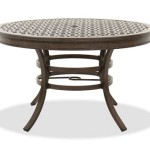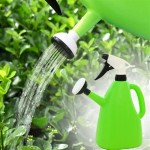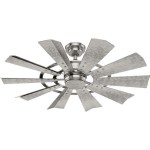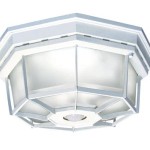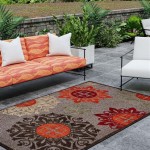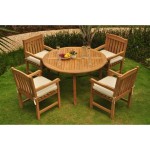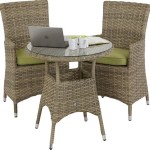Indoor and Outdoor Dog Kennel Ideas: Creating Safe and Comfortable Spaces for Your Canine Companion
Dog kennels provide essential safe havens for canines, offering designated spaces for rest, security, and containment. Whether indoors or outdoors, a well-designed kennel can significantly contribute to a dog's well-being and also ease pet management for owners. This article explores various indoor and outdoor dog kennel ideas, focusing on factors such as size, materials, design, and environmental considerations to help owners create the perfect haven for their furry friends.
Understanding the Need for a Dog Kennel
A dog kennel serves multiple purposes. For puppies, it aids in housetraining by providing a confined space that encourages bladder and bowel control. For adult dogs, it offers a secure retreat when feeling anxious, overwhelmed, or simply in need of quiet time. Kennels can also be invaluable for managing dogs during periods of illness, injury, or when guests are visiting. Moreover, outdoor kennels provide protection from the elements, offering shade during hot weather and shelter from rain or snow.
Before embarking on kennel design, it's crucial to understand a dog's individual needs and preferences. Factors to consider include the dog's size, breed, temperament, and any specific health conditions. For instance, a large breed dog will require a substantially larger kennel than a small breed. Similarly, a dog prone to anxiety might benefit from a kennel with a covered top, providing a greater sense of security. Observing a dog's behavior, noting where they naturally choose to rest or seek refuge, can provide valuable insights for optimal kennel placement and design.
Indoor Dog Kennel Ideas
Indoor kennels offer convenience and security, allowing dogs to remain within the comfort of the home while still having their own private space. Various options exist, catering to different needs and aesthetic preferences.
Wire Crates: Wire crates are a common and versatile option. They offer good ventilation and visibility, allowing dogs to see and interact with their surroundings. They are typically collapsible for easy storage and transport, making them suitable for travel or temporary use. Adding a comfortable bed, blanket, and toys transforms a wire crate into a cozy den.
Plastic Kennels: Plastic kennels, also known as travel kennels, are another popular choice. They are durable, easy to clean, and offer a more enclosed environment, which can be beneficial for dogs who prefer a sense of privacy. These kennels are particularly well-suited for car travel and can also be used as indoor shelters. Ensure adequate ventilation is provided through the openings on the sides and top of the kennel.
Furniture Kennels: Furniture kennels offer a more aesthetically pleasing alternative to traditional crates. These kennels are designed to resemble pieces of furniture, such as end tables or consoles, seamlessly blending into a home's décor. They provide a discreet and comfortable space for dogs while also serving a functional purpose within the living area. Ensure the chosen design provides sufficient ventilation and accessibility for both cleaning and the dog's entry and exit.
Designated Room or Area: Instead of a traditional kennel, consider dedicating a small room or area within the home as a dog's personal space. This could be a spare bedroom, a portion of the laundry room, or even a large closet. Furnish the area with a comfortable bed, toys, water and food bowls, and anything else that makes the dog feel secure and content. This option is particularly well-suited for multi-dog households or dogs with separation anxiety, as it provides ample space and a sense of belonging.
When selecting an indoor kennel, consider the following factors: size (the dog should be able to stand, turn around, and lie down comfortably), ventilation, durability, ease of cleaning, and overall aesthetic appeal.
Outdoor Dog Kennel Ideas
Outdoor kennels provide dogs with access to fresh air and sunshine while ensuring their safety and preventing them from wandering off. They are particularly useful for dogs who enjoy spending time outdoors or when owners need to contain their dogs for short periods.
Chain-Link Kennels: Chain-link kennels are a durable and cost-effective option for outdoor containment. They offer good visibility and ventilation, allowing dogs to observe their surroundings. These kennels can be customized in size and shape to suit individual needs and yard configurations. Consider adding a shade cloth or tarp to provide protection from the sun and rain.
Panel Kennels: Panel kennels consist of individual panels that can be connected to create a customized enclosure. These panels are typically made of metal or wood and come in various styles and sizes. Panel kennels are easy to assemble and disassemble, making them a portable option for travel or temporary use. Ensure the panels are securely connected to prevent escape.
Permanent Structure Kennels: For a more permanent outdoor kennel solution, consider building a dedicated structure. This could be a small shed, a converted garage, or a custom-built enclosure. Permanent structures offer greater protection from the elements and can be insulated for year-round comfort. Include features such as a dog door, a shaded area, and a comfortable sleeping area.
Considerations for Outdoor Kennel Design: Location is a critical factor in outdoor kennel design. Choose a location that provides shade during the hottest part of the day and protection from prevailing winds. The ground should be well-drained to prevent water from pooling. Consider the surrounding environment and potential hazards, such as poisonous plants or sharp objects.
Ensure the kennel is large enough for the dog to move around comfortably and engage in normal activities. Include enrichment items such as toys, chew bones, and a digging box to prevent boredom and destructive behavior. Provide fresh water at all times, especially during hot weather. Regularly clean the kennel to maintain hygiene and prevent the spread of disease.
Materials and Construction
The choice of materials for a dog kennel directly impacts its durability, safety, and overall comfort. Consider the following options:
Wood: Wood is a versatile and aesthetically pleasing material for kennel construction. It provides good insulation and can be painted or stained to match a home's décor. However, wood is susceptible to rot, insect damage, and chewing. Choose treated lumber and regularly inspect the kennel for signs of damage.
Metal: Metal, such as steel or aluminum, is a durable and low-maintenance option for kennel construction. It is resistant to chewing and weathering and can be easily cleaned. However, metal can become hot in direct sunlight and cold in freezing temperatures. Consider adding insulation or shade to mitigate these effects.
Plastic: Plastic is a lightweight, durable, and easy-to-clean material for kennel construction. It is resistant to moisture and insect damage and comes in a variety of colors and styles. However, plastic can be susceptible to chewing and may not be as aesthetically pleasing as wood or metal.
Flooring: The flooring of a dog kennel should be comfortable, durable, and easy to clean. Concrete is a popular option for outdoor kennels, as it is durable and easy to hose down. However, concrete can be cold and hard, so consider adding a layer of bedding or a raised platform for the dog to lie on. Other flooring options include gravel, wood chips, or rubber mats.
When constructing a dog kennel, prioritize safety and security. Ensure all materials are non-toxic and free from sharp edges or protrusions that could injure the dog. Securely fasten all components to prevent escape or collapse. Regularly inspect the kennel for signs of wear and tear and make any necessary repairs promptly.
Environmental Considerations
Creating a comfortable and safe environment within a dog kennel requires careful consideration of environmental factors such as temperature, ventilation, and lighting.
Temperature Regulation: Dogs are susceptible to both heatstroke and hypothermia, so it is crucial to regulate the temperature within the kennel. During hot weather, provide shade, ventilation, and plenty of fresh water. Consider using a cooling pad or fan to help keep the dog cool. During cold weather, provide insulation, bedding, and a draft-free environment. Consider using a heated bed or blanket to help keep the dog warm.
Ventilation: Adequate ventilation is essential for maintaining air quality and preventing the buildup of harmful gases within the kennel. Ensure there is sufficient airflow to circulate fresh air and remove stale air. Avoid placing the kennel in a confined space with poor ventilation.
Lighting: Natural light is beneficial for a dog's overall well-being. Position the kennel in a location that receives adequate sunlight. However, avoid direct sunlight during the hottest part of the day to prevent overheating. Provide artificial lighting if natural light is limited, especially during the evening hours.
Noise Levels: Minimize noise levels within and around the kennel to reduce stress and anxiety. Avoid placing the kennel near busy streets or noisy appliances. Consider using soundproofing materials to dampen noise levels if necessary.
By carefully considering these environmental factors, owners can create a kennel environment that is comfortable, safe, and conducive to a dog's overall health and well-being.
Size and Space Requirements
Determining the appropriate size for a dog kennel is essential for ensuring the dog's comfort and well-being. A kennel that is too small can be restrictive and uncomfortable, while a kennel that is too large can make the dog feel insecure.
Measuring Your Dog: To determine the appropriate kennel size, measure the dog's length from the tip of its nose to the base of its tail. Also, measure the dog's height from the top of its head to the ground when standing. Add a few inches to both measurements to allow for comfortable movement.
Minimum Kennel Dimensions: As a general guideline, the minimum kennel dimensions should be at least twice the dog's length and height. This allows the dog to stand, turn around, and lie down comfortably. For larger breeds, consider increasing the kennel size to provide ample space for movement.
Puppy Kennels: When selecting a kennel for a puppy, consider a kennel that is appropriately sized for the puppy's current size and growth potential. A kennel that is too large can encourage the puppy to eliminate in one area and sleep in another, hindering housetraining efforts. Consider using a divider to reduce the kennel size for a puppy and gradually increase the size as the puppy grows.
Multi-Dog Kennels: If housing multiple dogs in the same kennel, ensure there is sufficient space for each dog to move around comfortably and have their own personal space. Consider increasing the kennel size proportionally to the number of dogs housed within.
Beyond the kennel's physical dimensions, consider the available space in the home or yard. Ensure there is sufficient space to comfortably accommodate the kennel without obstructing walkways or compromising other activities. Consider the overall layout of the space and choose a kennel location that minimizes disruption and maximizes functionality.

30 Best Indoor Dog Kennel Ideas Outdoor Boarding Kennels

Outdoor Dog Kennel Ideas You Ll Love House Diy Rooms Boarding Kennels

Our Indoor Outdoor Kennels Vhr Ranch Dog Kennel Designs Breeding

25 Best Outdoor Dog Kennel Ideas Page 5 Of 7 The Paws Indoor Custom Designs

30 Best Indoor Dog Kennel Ideas Page 5 The Paws Designs Diy

Tips Tricks The Dog Kennel Collection

Amazon Com Outdoor Dog Kennel Ideas 4 Stars Up Indoor Hotel

Pin By Amy Rea On For The Home Dog Kennel Outdoor Diy Outside Dogs

Diy Building The Perfect Dog Kennel Gun

Indoor Outdoor Dog Kennel Plans Good Design Ideas

